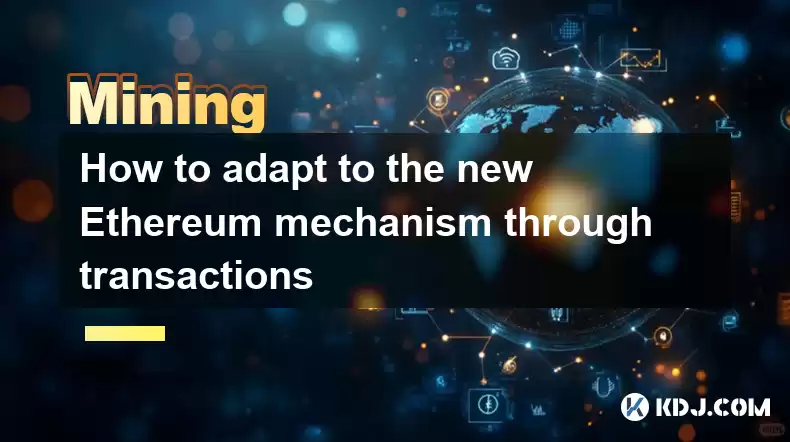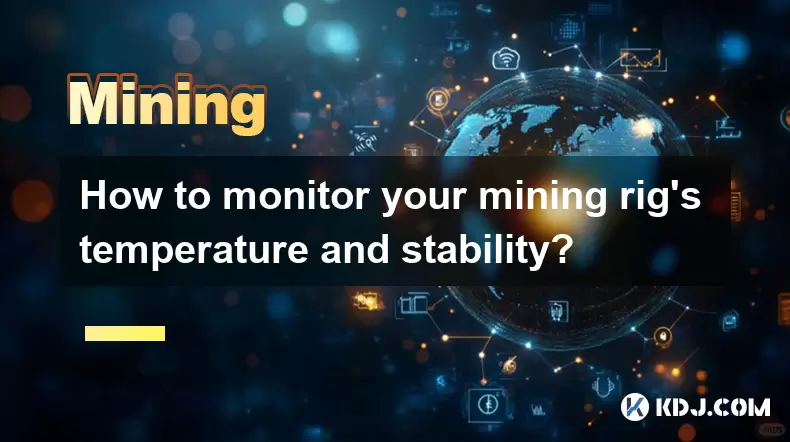-
 Bitcoin
Bitcoin $116400
-0.36% -
 Ethereum
Ethereum $4033
3.40% -
 XRP
XRP $3.302
-1.26% -
 Tether USDt
Tether USDt $1.000
-0.02% -
 BNB
BNB $796.1
1.67% -
 Solana
Solana $177.8
1.89% -
 USDC
USDC $0.9999
0.00% -
 Dogecoin
Dogecoin $0.2314
4.09% -
 TRON
TRON $0.3381
0.14% -
 Cardano
Cardano $0.7989
1.22% -
 Stellar
Stellar $0.4496
-1.84% -
 Chainlink
Chainlink $20.42
9.42% -
 Hyperliquid
Hyperliquid $41.17
0.88% -
 Sui
Sui $3.914
3.77% -
 Bitcoin Cash
Bitcoin Cash $584.7
1.52% -
 Hedera
Hedera $0.2632
-0.54% -
 Avalanche
Avalanche $24.09
3.40% -
 Ethena USDe
Ethena USDe $1.001
-0.02% -
 Litecoin
Litecoin $123.2
1.33% -
 Toncoin
Toncoin $3.318
-0.04% -
 UNUS SED LEO
UNUS SED LEO $8.984
-0.05% -
 Shiba Inu
Shiba Inu $0.00001323
2.85% -
 Uniswap
Uniswap $10.90
4.41% -
 Polkadot
Polkadot $3.999
3.34% -
 Dai
Dai $1.000
0.01% -
 Cronos
Cronos $0.1630
9.64% -
 Bitget Token
Bitget Token $4.484
0.82% -
 Monero
Monero $272.4
2.44% -
 Pepe
Pepe $0.00001173
6.03% -
 Aave
Aave $290.8
2.88%
How to adapt to the new Ethereum mechanism through transactions
The Ethereum Merge has reduced transaction costs, increased transaction volume, and enhanced security through its transition to a proof-of-stake consensus mechanism.
Feb 25, 2025 at 05:25 pm

How to Adapt to the New Ethereum Mechanism Through Transactions
Key Points:
- Understanding the Ethereum Merge and its impact on transactions
- Tips for optimizing transactions in a proof-of-stake system
- Strategies for dealing with potential transaction delays and fees
1. Understanding the Ethereum Merge and Its Impact on Transactions
The Ethereum Merge, completed in September 2022, marked a significant shift from a proof-of-work consensus mechanism to a proof-of-stake system. This change has profound implications for transaction processing:
- Reduced Transaction Costs: Proof-of-stake eliminates the energy-intensive mining process, resulting in lower operating costs for validators. These savings can be passed on to users in the form of reduced transaction fees.
- Increased Transaction Volume: Proof-of-stake allows for faster and more efficient transaction processing. By eliminating the need for computationally intensive mining, the network can handle more transactions per second.
- Enhanced Security: The proof-of-stake system provides enhanced security by requiring validators to stake a portion of their ETH holdings. This creates a strong incentive for validators to behave honestly and prevent malicious activity on the network.
2. Tips for Optimizing Transactions in a Proof-of-Stake System
To maximize the efficiency of your Ethereum transactions, consider the following tips:
- Use Gas Estimation Tools: Gas estimation tools can help you determine the optimal gas price and gas limit for your transaction. By setting the appropriate gas price, you can ensure that your transaction is processed quickly while minimizing fees.
- Avoid Peak Periods: The Ethereum network is typically busiest during peak hours. If possible, try to schedule your transactions during off-peak times to avoid potential delays and higher fees.
- Use Layer 2 Solutions: Layer 2 solutions, such as Polygon or Optimism, can help offload some of the transaction load from the main Ethereum blockchain. By using these secondary networks, you can experience faster and cheaper transactions.
3. Strategies for Dealing with Potential Transaction Delays and Fees
Despite the improvements brought about by the Merge, transaction delays and fees can still occur on the Ethereum network during periods of high activity. To mitigate these challenges, consider the following strategies:
- Set Realistic Expectations: Understand that transaction congestion can impact processing times. Be prepared to wait for your transaction to be completed, especially during peak hours.
- Monitor Network Conditions: Use block explorers or network monitoring tools to monitor the current network conditions and adjust your transaction strategy accordingly.
- Consider Alternative Blockchains: If transaction delays or fees on Ethereum become prohibitive, you may consider exploring alternative blockchains with faster and cheaper transaction processing.
FAQs:
Q: What is the impact of the Merge on transaction times?
A: The Merge generally reduces transaction times due to the increased efficiency of the proof-of-stake system. However, transaction times can still vary depending on network activity and the complexity of the transaction.
Q: Will transaction fees decrease after the Merge?
A: Transaction fees have generally decreased after the Merge due to the reduced operating costs for validators. However, fees can still fluctuate based on network conditions and the demand for transactions.
Q: How can I reduce transaction fees on Ethereum?
A: Use gas estimation tools, avoid peak periods, and consider using Layer 2 solutions to optimize your transaction strategy and minimize fees.
Q: Are there any risks associated with using proof-of-stake for transactions?
A: Proof-of-stake is generally considered more secure than proof-of-work. However, it is important to note that there is a potential risk of centralization, as a small number of large validators could potentially collude to disrupt the network.
Disclaimer:info@kdj.com
The information provided is not trading advice. kdj.com does not assume any responsibility for any investments made based on the information provided in this article. Cryptocurrencies are highly volatile and it is highly recommended that you invest with caution after thorough research!
If you believe that the content used on this website infringes your copyright, please contact us immediately (info@kdj.com) and we will delete it promptly.
- HAT Token Mania: Price Surges, Crypto Auctions, and Meme Coin Mayhem
- 2025-08-09 11:10:11
- Undervalued Cryptos Primed for a 2025 Takeoff: MAGACOIN, TRX, and SUI Lead the Pack
- 2025-08-09 11:10:11
- Bitcoin Goes to Harvard: Ivy League Embraces Digital Assets
- 2025-08-09 10:50:12
- Bitcoin, BlockDAG, and Toncoin: Decoding the Crypto Buzz in NYC
- 2025-08-09 11:30:11
- XRP, Pi Network, and Binance Listing Buzz: What's the Hype?
- 2025-08-09 11:30:11
- Arctic Pablo Coin: The Meme Coin Presale Promising High ROI in Q3 2025
- 2025-08-09 10:50:12
Related knowledge

What is "proof-of-work" and how does it relate to mining?
Aug 07,2025 at 02:03pm
Understanding the Concept of Proof-of-WorkProof-of-work (PoW) is a consensus mechanism used in blockchain networks to validate transactions and secure...

What are the differences between mining on Windows vs. Linux?
Aug 06,2025 at 11:29pm
Overview of Cryptocurrency Mining PlatformsCryptocurrency mining involves using computational power to solve complex cryptographic puzzles and validat...

How to use an old computer for cryptocurrency mining?
Aug 07,2025 at 12:42pm
Understanding the Feasibility of Using an Old Computer for MiningUsing an old computer for cryptocurrency mining may seem outdated, but it is still te...

Can you mine cryptocurrency using solar power?
Aug 07,2025 at 12:00am
Understanding the Basics of Cryptocurrency MiningCryptocurrency mining involves validating transactions on a blockchain network by solving complex cry...

How to monitor your mining rig's temperature and stability?
Aug 09,2025 at 09:43am
Understanding the Importance of Temperature Monitoring in Mining RigsMaintaining optimal temperature levels in a mining rig is essential for long-term...

How to build a mining rig inside a PC case?
Aug 06,2025 at 11:01pm
Understanding the Basics of a Mining Rig in a PC CaseBuilding a mining rig inside a PC case involves transforming a standard computer chassis into a d...

What is "proof-of-work" and how does it relate to mining?
Aug 07,2025 at 02:03pm
Understanding the Concept of Proof-of-WorkProof-of-work (PoW) is a consensus mechanism used in blockchain networks to validate transactions and secure...

What are the differences between mining on Windows vs. Linux?
Aug 06,2025 at 11:29pm
Overview of Cryptocurrency Mining PlatformsCryptocurrency mining involves using computational power to solve complex cryptographic puzzles and validat...

How to use an old computer for cryptocurrency mining?
Aug 07,2025 at 12:42pm
Understanding the Feasibility of Using an Old Computer for MiningUsing an old computer for cryptocurrency mining may seem outdated, but it is still te...

Can you mine cryptocurrency using solar power?
Aug 07,2025 at 12:00am
Understanding the Basics of Cryptocurrency MiningCryptocurrency mining involves validating transactions on a blockchain network by solving complex cry...

How to monitor your mining rig's temperature and stability?
Aug 09,2025 at 09:43am
Understanding the Importance of Temperature Monitoring in Mining RigsMaintaining optimal temperature levels in a mining rig is essential for long-term...

How to build a mining rig inside a PC case?
Aug 06,2025 at 11:01pm
Understanding the Basics of a Mining Rig in a PC CaseBuilding a mining rig inside a PC case involves transforming a standard computer chassis into a d...
See all articles

























































































